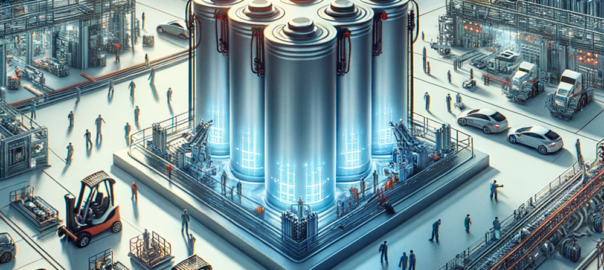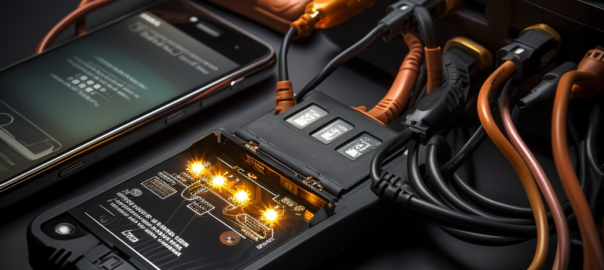In the era of technological innovation, power has become an essential commodity. Lithium batteries, more commonly known as Li-ion batteries, are at the forefront of this revolution, offering efficient energy storage solutions for a myriad of devices we use daily. From powering our smartphones and laptops to electric vehicles and renewable energy storage systems, lithium batteries have indeed transformed the way we live and work.
The versatility of lithium batteries stems from their high energy density, which enables them to store more energy in a smaller volume, making them lightweight and compact. Additionally, their long cycle life allows them to be recharged and used repeatedly, providing lasting power for our devices.
Despite their overwhelming advantages, the technology behind lithium batteries is not without its share of questions and concerns. As the demand for these batteries grows, addressing these unanswered questions becomes paramount to ensure their continued success and sustainable utilization.
In this article, we will delve into the world of lithium batteries, exploring their advantages and disadvantages, and shedding light on some of the critical, unanswered questions surrounding their technology, performance, and long-term sustainability.
Contents
What are Lithium Batteries?
Lithium batteries are a type of rechargeable battery that relies on lithium ions as the main component of their electrolyte. During the charging and discharging process, lithium ions move between the positive and negative electrodes of the battery, generating electric power. The main components of a lithium battery include the cathode (positive electrode), anode (negative electrode), electrolyte, and separator.
The cathode is typically made from lithium metal oxide, and its composition affects the voltage and capacity of the battery. The anode is usually made from graphite or other materials capable of storing lithium ions. The electrolyte is a liquid or gel that contains lithium ions and conducts electricity, while the separator is a thin membrane that prevents the electrodes from touching each other and causing a short circuit.
3. Advantages and Disadvantages of Lithium Batteries
Lithium batteries come with several advantages that make them suitable for various applications, but they also have certain limitations.
3.1 Advantages Table
| Advantages | Description |
|---|---|
| High Energy Density | Lithium batteries can store more energy per unit of weight and volume compared to other battery types, making them ideal for portable devices. |
| Long Cycle Life | With proper care, they can be recharged and used hundreds of times without significant loss of capacity. |
| Fast Charging | They can be charged more quickly than other battery technologies, making them convenient for everyday use. |
| Low Self-discharge | Lithium batteries have a low self-discharge rate, meaning they can retain their charge for longer periods when not in use. |
3.2 Disadvantages Table
| Disadvantages | Description |
|---|---|
| Safety Concerns | Lithium batteries can pose fire and explosion risks, especially when damaged or improperly handled. |
| Environmental Impact | The mining and processing of lithium can have negative environmental effects, and recycling of lithium batteries is still a challenge. |
| Higher Costs | Lithium batteries are typically more expensive than other types of batteries, which can limit their adoption in some applications. |
| Limited Temperature Range | Extreme temperatures can affect the performance and safety of lithium batteries. |

Unanswered Questions in Lithium Battery Technology
Despite their numerous advantages, several unanswered questions persist in the field of lithium battery technology. These questions revolve around improving the lifespan, energy density, safety, environmental impact, and cost-effectiveness of lithium batteries.
4.1 Question 1: Lifespan Improvement
One of the key questions in lithium battery technology is how to extend the lifespan of these batteries without sacrificing their energy density or power output. Over time, the capacity of a lithium battery degrades, leading to a decrease in its performance.
Table: Factors Affecting Lithium Battery Lifespan
| Factor | Effect |
|---|---|
| Temperature | High temperatures can accelerate the aging process, reducing battery lifespan. |
| Charge/Discharge Cycles | Frequent charging and discharging can strain the battery and shorten its life. |
| Overcharging | Charging a battery beyond its capacity can cause damage and reduce its lifespan. |
| Depth of Discharge | Discharging a battery to very low levels can negatively affect its lifespan. |
4.2 Question 2: Energy Density Enhancements
Increasing the energy density of lithium batteries is a crucial step towards creating smaller, lighter batteries with higher energy storage capabilities. Higher energy densities would enable more compact and powerful devices, but achieving this requires advancements in materials science and battery design.
Table: Approaches to Enhance Energy Density
| Approach | Description |
|---|---|
| New Electrode Materials | Exploring alternative materials for the cathode and anode can help increase energy density. |
| Solid-State Electrolytes | Replacing liquid electrolytes with solid-state alternatives can enhance energy density and safety. |
| Advanced Battery Architectures | Innovative battery designs can improve energy storage and charge/discharge efficiency. |
4.3 Question 3: Safety Concerns
The safety of lithium batteries, especially concerning thermal runaway, fire, and explosion risks, is a significant concern. Addressing these risks involves understanding the factors that contribute to safety incidents and developing mitigation strategies.
Table: Safety Concerns and Mitigation Strategies
| Safety Concern | Mitigation Strategy |
|---|---|
| Thermal Runaway | Implementing thermal management systems can help regulate temperature and prevent overheating. |
| Battery Damage | Proper handling, storage, and transportation practices can minimize physical damage to batteries. |
| Short Circuits | Incorporating safety features such as circuit breakers and fuses can prevent short circuits and protect the battery. |
4.4 Question 4: Environmental Impact
As the demand for lithium batteries grows, so do concerns about their environmental impact, particularly regarding lithium mining, battery production, and waste management. Addressing these issues is essential for the sustainable development and adoption of lithium battery technology.
Table: Environmental Impact and Solutions
| Environmental Concern | Solution |
|---|---|
| Lithium Mining | Implementing responsible mining practices and exploring alternative sources of lithium can help mitigate the environmental impact. |
| Battery Production | Reducing energy consumption and emissions during battery production can lower the environmental footprint. |
| Waste Management | Developing efficient recycling and disposal methods for lithium batteries can minimize waste and pollution. |
4.5 Question 5: Costs and Market Availability
Reducing the costs of lithium batteries and making them more accessible to a wider range of consumers and industries is another critical question. Achieving this requires advancements in materials, manufacturing processes, and market dynamics.
Table: Factors Affecting Costs and Market Availability
| Factor | Description |
|---|---|
| Raw Material Costs | Securing a stable and affordable supply of lithium and other materials is essential for cost reduction. |
| Manufacturing Processes | Improving production efficiency and reducing waste can lower manufacturing costs. |
| Market Demand and Supply | Balancing the demand and supply of lithium batteries in the market can help stabilize prices and availability. |
| Economies of Scale | Mass production and increased adoption of lithium batteries can drive down costs through economies of scale. |
Conclusion
Lithium batteries have become an indispensable part of modern technology, powering a wide range of devices and applications. Their high energy density, long cycle life, and fast charging capabilities make them a preferred choice for many applications. However, addressing the unanswered questions regarding their lifespan, energy density, safety, environmental impact, and cost-effectiveness is crucial for the continued development and adoption of lithium battery technology. By exploring new materials, innovative battery designs, and sustainable practices, we can unlock the full potential of lithium batteries and pave the way for a more sustainable and connected future.
Frequently Asked Questions (FAQs)
1. What is a lithium battery?
A lithium battery is a type of rechargeable battery that uses lithium ions as the primary component of its electrolyte. During charging and discharging, lithium ions move between the positive and negative electrodes of the battery, generating electric power.
2. What are the advantages of lithium batteries?
Lithium batteries have several advantages, including high energy density, long cycle life, fast charging, and low self-discharge rates.
3. What are the disadvantages of lithium batteries?
The disadvantages of lithium batteries include safety concerns, negative environmental impact, higher costs, and limited temperature range.
4. How can the lifespan of lithium batteries be improved?
The lifespan of lithium batteries can be improved by managing temperature, avoiding overcharging, reducing the depth of discharge, and minimizing the number of charge/discharge cycles.
5. What factors affect the energy density of lithium batteries?
The energy density of lithium batteries is influenced by electrode materials, electrolytes, and battery architectures.
6. How can the environmental impact of lithium batteries be reduced?
To reduce the environmental impact of lithium batteries, responsible mining practices, energy-efficient battery production, and efficient recycling and disposal methods should be adopted.
7. What factors affect the costs and market availability of lithium batteries?
Raw material costs, manufacturing processes, market demand and supply, and economies of scale affect the costs and market availability of lithium batteries.










